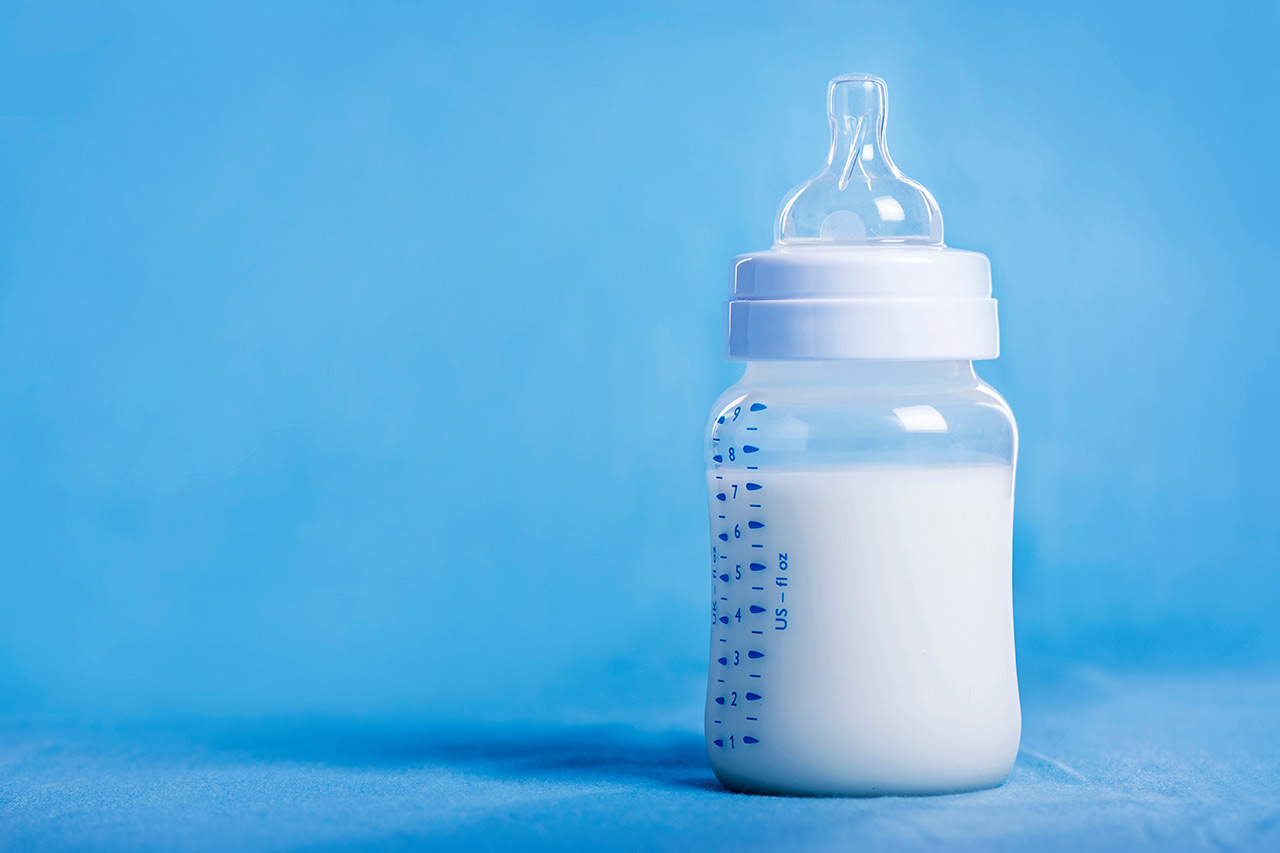Cow’s milk protein allergy (CMPA) is a disease that affects a baby’s immune system, in reaction to the proteins found in cow’s milk. This allergy usually appears in infants before the age of one, and in most cases, gradually goes away on its own. Symptoms may include skin problems (rashes, itching…), digestive system manifestations (diarrhea, vomiting…) or respiratory problems (coughing, noisy breathing). Of course, at this age, infants are vulnerable and treating this illness is essential to ensure their well-being and good development. Specialists usually recommend breastfeeding along with a cow’s milk exclusion diet for the mother (cow’s milk proteins can be found in breast milk), but breastfeeding is not always possible. In this case, which product should be developped for babies with CMPA?
The specific market context for products indicated for babies with CMPA
To help mothers in this situation, companies have developed two types of hypoallergenic formulas: a first line formula (Extensively Hydrolyzed Formula – EHF) and a second line formula (Amino Acid Formula – AAF). In Switzerland, these CMPA formulas are part of the “list of specialties”, meaning they can be reimbursed by health insurance when prescribed by health professionals.
Another specific aspect is that marketing to direct consumers is not allowed.
In this context, how can infant nutrition companies develop an ideal and competitive product?
Ideal formula composition for babies with cow’s milk protein allergy: what matters and future trends
CMPA product formulas for babies have evolved since their inception in 1865. Today, the medical world agrees that breastfeeding remains the best option, and hypoallergenic formulas are no exception. A look at the latest innovations in non-therapeutic formulas shows a clear trend of the direction infant formulas will take. While innovation has long been very slow, the last few years have seen a wave of innovation all pointing in one direction: making formula as close to breast milk as possible.
Alpha-lactalbumin
In 2019, Arla Foods Ingredients received FDA approval to supply its Lacprodan ALPHA-10 whey protein concentrate, containing 41% alpha-lactalbumin, for the U.S. formula market. Alpha-lactalbumin is abundant in breast milk, making up more than 25% of the total protein content. Arla Foods Ingredients says this ingredient helps the formula more closely mimic breast milk.
Lactoferrin protein
This year, in 2020, Conagen announced the development of lactoferrin protein, a protein with a high affinity for iron that also has antibacterial, antiviral and immunological effects.
In addition, this protein is produced by fermentation via bacteria and more closely resembles lactoferrin found in human milk, giving it superior performance to lactoferrin found in cow’s milk.
HMO – Human Milk Oligosaccharides
HMOs are sugar molecules found exclusively in human milk in which they are the third most abundant solid element after lactose and lipids. These HMOs play an important role in the gastrointestinal well-being of babies.
There are 3 main categories of HMOs:
- The neutral human oligosaccharides (2′-Fucosyllactose) which represent 45% of the total
- The “N-containing” human oligosaccharides (lacto-N-tetraose) which also represent about 40%
- The acid HMOs (2′-sialyllactose) which represent 10 to 15%.
Abott and Nestlé have led the charge to include these HMOs (particularly lacto-N-neotetraose (LNnT) and 2′-fucosyllactose (2′-FL)) in CMPA baby formula, thus getting a little closer to breast milk.
The ideal format for CMPA formula: a convenient and tasty product
While bringing formula closer to breast milk is very important, there are other issues. Beyond the simple nutritional aspects of the formulas, the use of powdered formula poses some problems for parents of babies with cow’s milk protein allergy.
First of all, since these products are intended for an infant audience, it is important that babies find the CMPA products tasty. A bad taste is one of the most common complaints about therapeutics formulas, especially for babies with CMPA diagnosed later in life : they may refuse to consume these products, even though they are vital to their treatment.
Because the formulas are in powder form, water must be added before consumption. However, each formula is different and the resulting liquid formulas have varying degrees of viscosity. Babies are prone to spit-up and formulas that are too liquid can reinforce this tendency.
Finally, if we look at the format of non-therapeutics formulas, we also note on the Swiss market a coexistence between a larger 800g format and the 400g format proposed for therapeutic formulas. In this context, it is reasonable to ask why the larger formats are not marketed in Switzerland? Larger packaging would indeed reduce the need for parents to make frequent trips to the pharmacy, reduce the ecological footprint of the CMPA formulas and allow for economies of scale.
CMPA products: a need for prescription-oriented marketing actions
The Swiss market for CMPA is characterized by the fact that direct-to-consumer advertising is prohibited. These infant formulas are on the “list of specialties”: their price is set by the authorities and reimbursed if the product has been prescribed by a health professional. This unusual situation means that direct marketing to consumers is impossible and that the real marketing targets are in fact health professionals. Of course, doctors can choose to prescribe the preferred formula if parents express a preference, but in reality this is very rare.
Given the importance of doctors in the choice of CMPA formula, it is crucial to ensure that prescribers have an adequate level of knowledge of the product you wish to sell. Keeping up to date with the latest innovations is not necessarily a priority for pediatricians, considering the low volume of prescriptions a pediatrician makes per year (less than a dozen in most cases). This means that the overall interest and knowledge of CMPA formulas is relatively low among healthcare professionals and that communicating this information about CMPA products to them represents a real challenge for suppliers.
If direct advertising to parents is not possible, there is always the possibility of indirect influence through pharmacists, third-party digital resellers or other entities. Ensuring that these third parties are knowledgeable and have the right offer on the products you want to promote will increase product visibility.
Thus, the ideal CMPA formula will be as close to breast milk as possible, will be tailored to the taste of babies, will have an appropriate level of direct marketing to healthcare professionals but will also take advantage of indirect marketing opportunities to parents. All these elements are likely to become differentiating factors in your product development for babies with cow’s milk protein allergy, as well as in your go to market strategy. These factors would benefit from being taken into account by companies offering therapeutic baby formula in Switzerland, but also in other countries.
About the authors
Axel, Consultant and Quentin, Project Manager in Alcimed’s Life Sciences team in Switzerland



